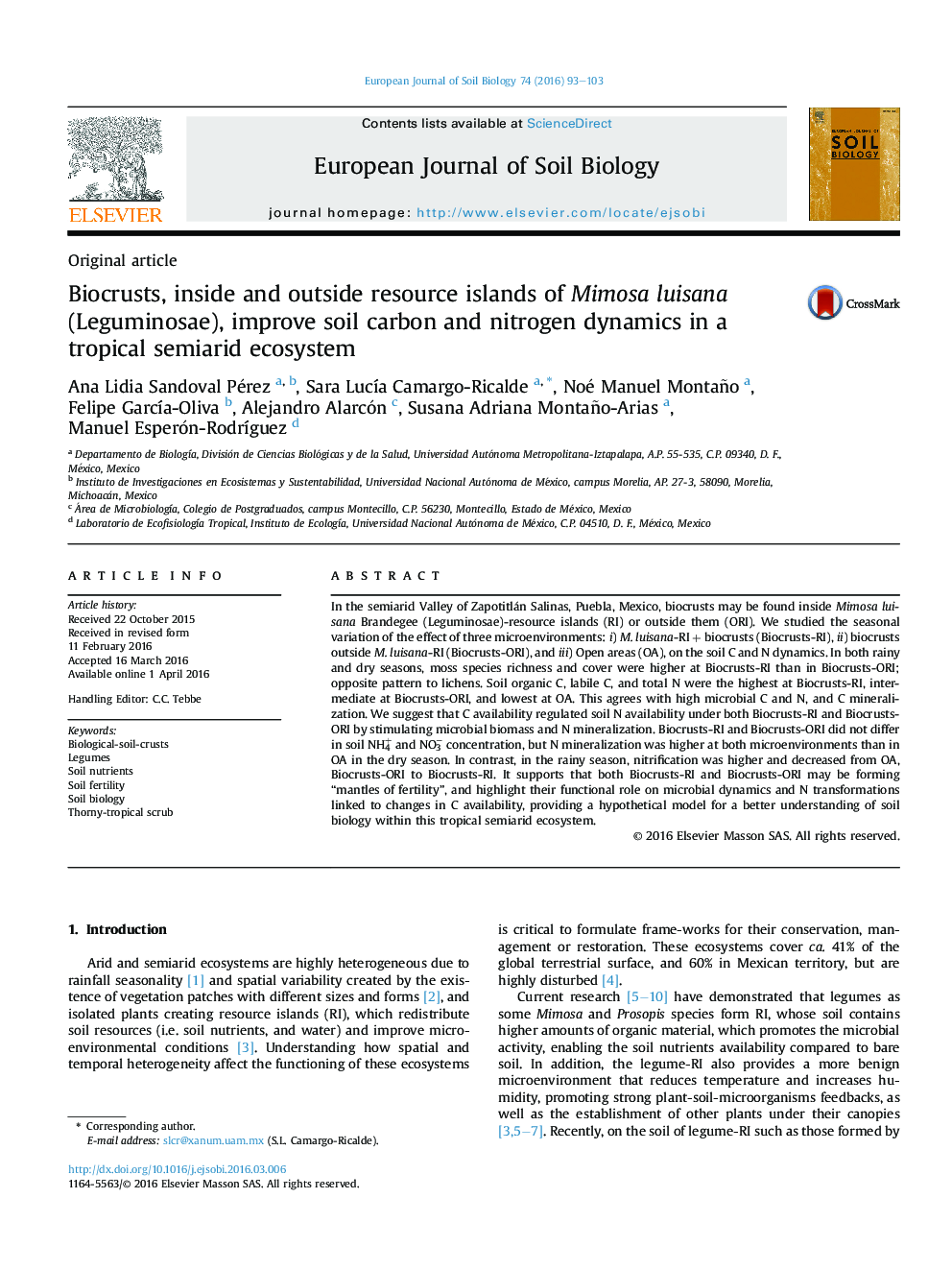| Article ID | Journal | Published Year | Pages | File Type |
|---|---|---|---|---|
| 4391705 | European Journal of Soil Biology | 2016 | 11 Pages |
•Biocrusts inside Mimosa luisana-resources islands (RI) had more mosses than biocrusts outside it, in which dominated lichens.•Soil C and N dynamics were favored by biocrusts inside and outside M. luisana-RI.•Biocrusts inside and outside M. luisana-RI increases soil C availability, which stimulated the microbial biomass and activity.•Biocrusts outside and inside M. luisana-RI operate similarly on soil C and N dynamics in the rainy season.•Biocrusts inside and outside M. luisana-RI form “mantles of fertility” compared to open area.
In the semiarid Valley of Zapotitlán Salinas, Puebla, Mexico, biocrusts may be found inside Mimosa luisana Brandegee (Leguminosae)-resource islands (RI) or outside them (ORI). We studied the seasonal variation of the effect of three microenvironments: i) M. luisana-RI + biocrusts (Biocrusts-RI), ii) biocrusts outside M. luisana-RI (Biocrusts-ORI), and iii) Open areas (OA), on the soil C and N dynamics. In both rainy and dry seasons, moss species richness and cover were higher at Biocrusts-RI than in Biocrusts-ORI; opposite pattern to lichens. Soil organic C, labile C, and total N were the highest at Biocrusts-RI, intermediate at Biocrusts-ORI, and lowest at OA. This agrees with high microbial C and N, and C mineralization. We suggest that C availability regulated soil N availability under both Biocrusts-RI and Biocrusts-ORI by stimulating microbial biomass and N mineralization. Biocrusts-RI and Biocrusts-ORI did not differ in soil NH4+ and NO3− concentration, but N mineralization was higher at both microenvironments than in OA in the dry season. In contrast, in the rainy season, nitrification was higher and decreased from OA, Biocrusts-ORI to Biocrusts-RI. It supports that both Biocrusts-RI and Biocrusts-ORI may be forming “mantles of fertility”, and highlight their functional role on microbial dynamics and N transformations linked to changes in C availability, providing a hypothetical model for a better understanding of soil biology within this tropical semiarid ecosystem.
